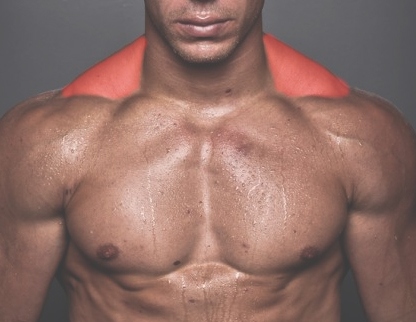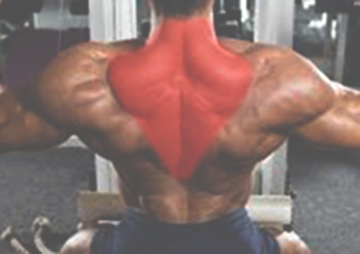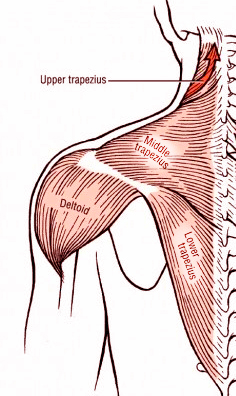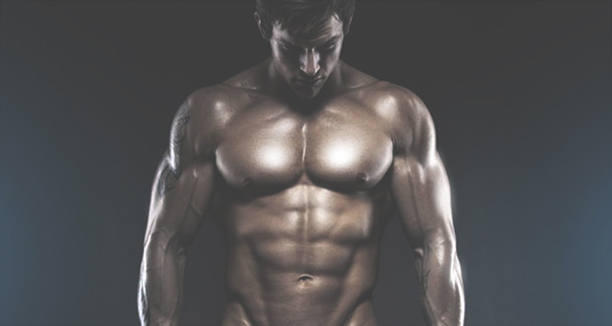The trapezius muscle or more commonly known as the traps are an understated muscle group that really defines a strong upper body physique. They finish off a well-sculpted body more than most people think, yet they are often undertrained or ineffectively trained, preventing you from developing a fuller upper body mass and physique you have been looking to achieve.


How The Trapezius Muscle Is Made Up
There are three parts of the trapezius:

- Superior fibres
- Middle fibres
- Inferior fibres
The Function of The Trapezius Muscle
The main function of the trapezius muscle is to stabilize and move the scapula.
Each portion (fibres) engages with different movements:
- The upper portion is engaged by elevating the shoulder blades
- The middle portion is engaged by pulling the shoulder blades together
- The lower portion is engaged by drawing the shoulders back and downward
It’s important that you understand how to effectively engage each portion before you use resistance (weight), as it often becomes difficult to determine the extent of which a muscle is contracted, and whether the correct muscle is engaged in the first place. Often weight loads get displaced, causing other muscles, rather than the target muscle, to assume a portion of the resistance; this ultimate reduces the efficiency and effectiveness of the exercise. To combat this problem you should try to stimulate the muscle through performing the exercise and the whole movement without resistance first. Using a mirror provided in the gym will help to guide the movement into the correct pattern. The mirrors are there for this purpose, so make use of them.
The Trap Blast Workout
Dumbbell Shrugs or Barbell Shrugs (Upper Fibres)
4 sets, 10-15 reps
The focus is on the upper trapezius and levator scapulae. You can force higher weight loads using barbell shrugs than dumbbell shrugs, however the dumbbell shrugs forces the movement into an aligned position with your hand by your sides, rather than using a barbell, where your grip is supinated, with your hands fixed slightly in front of you, thus causing the shoulders to roll forward slightly, which loads the weight in front of you.
Using a Smith machine barbell shrug, rather than barbell shrug, can dramatically increase the weight load lifted as the fixed movement of the Smith-machine reduces the engagement of the stabilising muscles involved in the movement. This is particular good if you want to force higher weights loads (progressive overload) to increase strength, however, for a fuller, more balanced development, dumbbells are best.
While performing this exercise, slow down the eccentric phase, to control the weight as it is being lowered. This will keep tension on the target muscles throughout the movement. On the concentric phase, lift the weight high so that you squeeze your traps towards your ears.
Experimenting with lighter weight loads can also be an effective training technique as you will have the capability to lift the weight higher during the concentric phase, and squeeze & hold it at that point for a second; with a higher forced contraction. You will definitely feel the burn using this method!
Incline Dumbbell Shrugs (Middle Fibres)
3sets, 10-15 reps
Fix an incline bench to a 15-30 degree angle and lay forward, chest resting on the bench. While holding each dumbbell, let your arms dangle down straight towards the ground. Shrug your shoulders up towards your ears – the movement shouldn’t focus on moving the shoulder blades back, but moving the shoulders up and down. The angle of this movement puts a greater focus onto the middle traps and slightly away from the upper traps and levator scapulae. Remember to squeeze & hold at the peak of the contraction for a second.
Snatch-Grip Barbell High Pulls or Robe Cable High Pulls (Upper Fibres)
3 sets, 10-15 reps
This gives a deeper pull than shrug movement as you are lifting the deltoids. This movement will activate more muscle fibres than a standard shrug and you can get really good burn (muscle pump) from this exercises however, you will not be able to move such a high weight load than a normal shrug and you must be careful with the wrists, as there is a potential for injury, especially under high weight loads. To perform this exercise right make sure you lead the movement with your traps, not with your wrists or deltoids – this involves fine tuning muscle engagement.
Face Pulls (Middle Fibres)
3 sets, 10 reps
Using a cable machine and rope, set the cable to a fixed point at head height. Lean back to about a 45-degree angle placing one foot in front of the other to stabilize yourself. This can also be performed by lying on a gym ball or using an incline bench, fixed slightly lower than 45 degrees so as to accommodate the movement of the shoulder blades, allowing for a much deeper pull from the elbows (a steeper angle would prevent the elbow from drawing back to its fullest extent, as the bench would be in the way).
As you pull the weight towards your face, keep you elbows higher than your wrists and lead the movement from the traps (it’s difficult to judge this), once you’ve reached the peak of the contraction hold it for a 1 second (as though you are trying to hold a pen in-between your shoulder blades), then slowly return to the original position.
High Pulley Reverse Fly (Lower Fibres)
3 sets, 10 reps
Initiate with the shoulder blades and keep the movement away from the deltoids as much as possible – we are not trying to make this a deltoid exercise and yes it will engage the deltoid somewhat but, you must lead with the movement from the traps. You must also minimise the recruitment of the triceps. Many people attempting this exercise will extend the arms at the peak of the movement to try to get their arms as far back as possible. This is a waste as you are not trying to make this a triceps exercise, and second, this can take away some of your focus in squeezing the traps throughout the movement – therefore reducing the effectiveness of the exercise. What should you do?
By stabilizing the elbow joint into a fixed position throughout the movement – with a slight bend in your elbow – will help you to just focus on squeezing the traps. Again, imagine as you perform this movement on the concentric (muscle shortening) phase you are trying to squeeze a pen between your shoulder blades.
This exercise is often performed best with light weights loads, as heavy weight loads often result in poor form, causing the rear deltoids to engage more than they should, which in turn moves the tension away from the lower portion of the traps.
How To Best Train The Trap Muscle
The best day to train the traps would be on a day the shoulders and chest are conditioned. And performing compound shoulder exercises prior to training the traps would be recommended, as otherwise, the traps would become fatigued, including the levator scapulae and other stabilizers.
Any shoulder exercises performed after working the traps – such as shoulder pressing movement, would warrant poor stimulation in the muscle involved in the shoulder exercise and could also increase the chance of injury due to poor control over the stabilizing muscles from fatigue. This is particularly the case if you are lifting heavy weight loads.
Join the conversation below and share this article now.


very nice post, i certainly love this website, keep on it